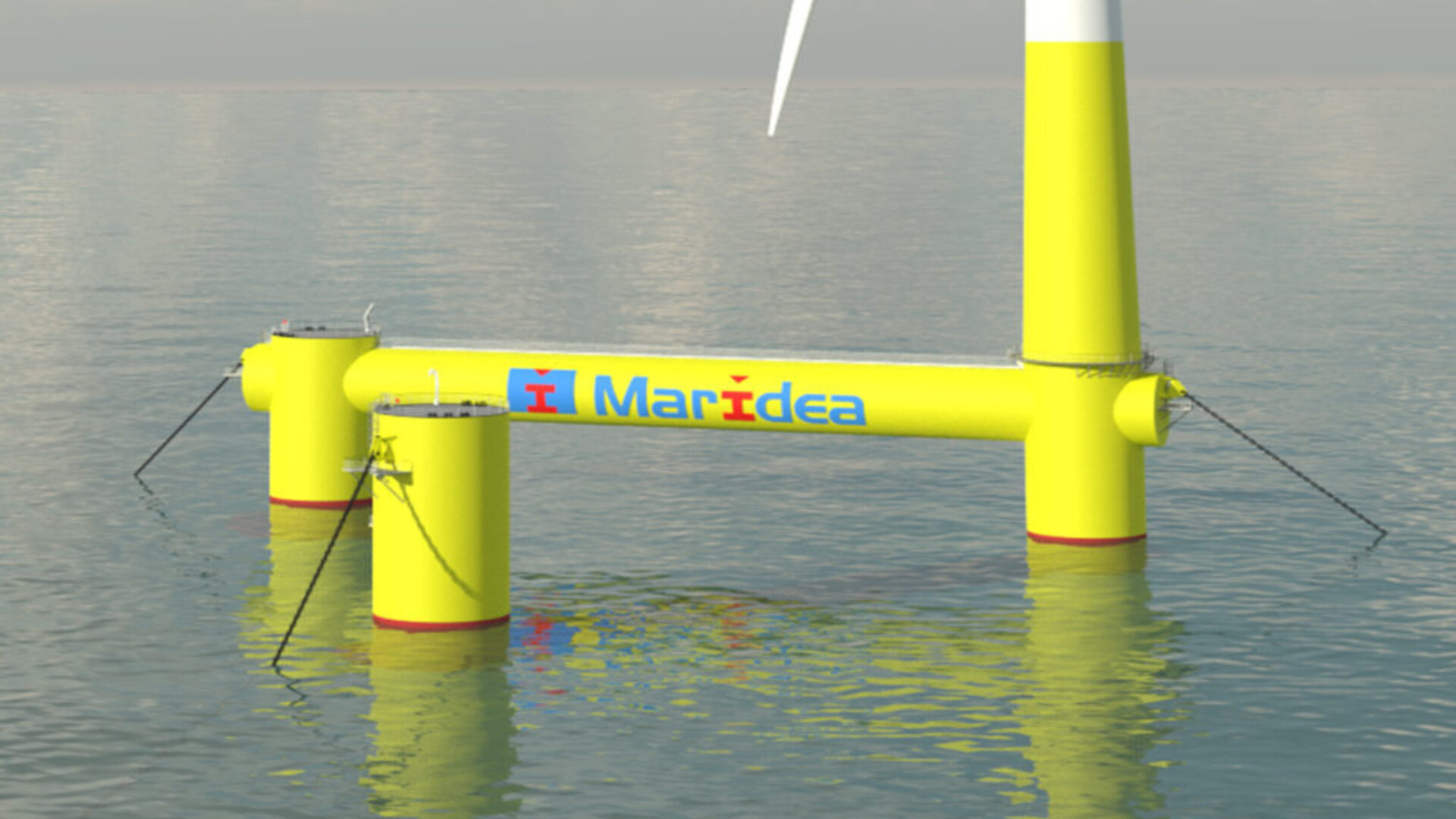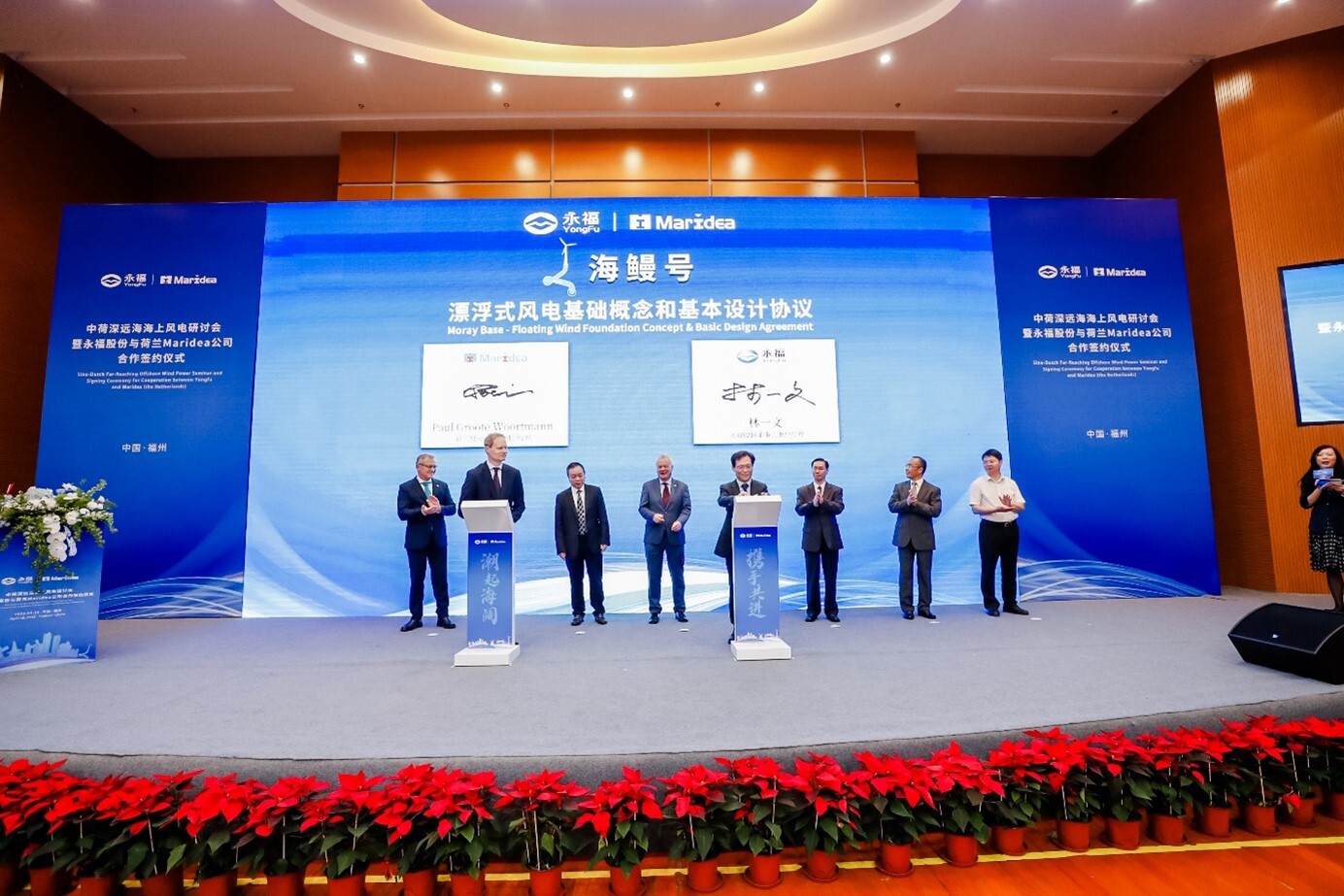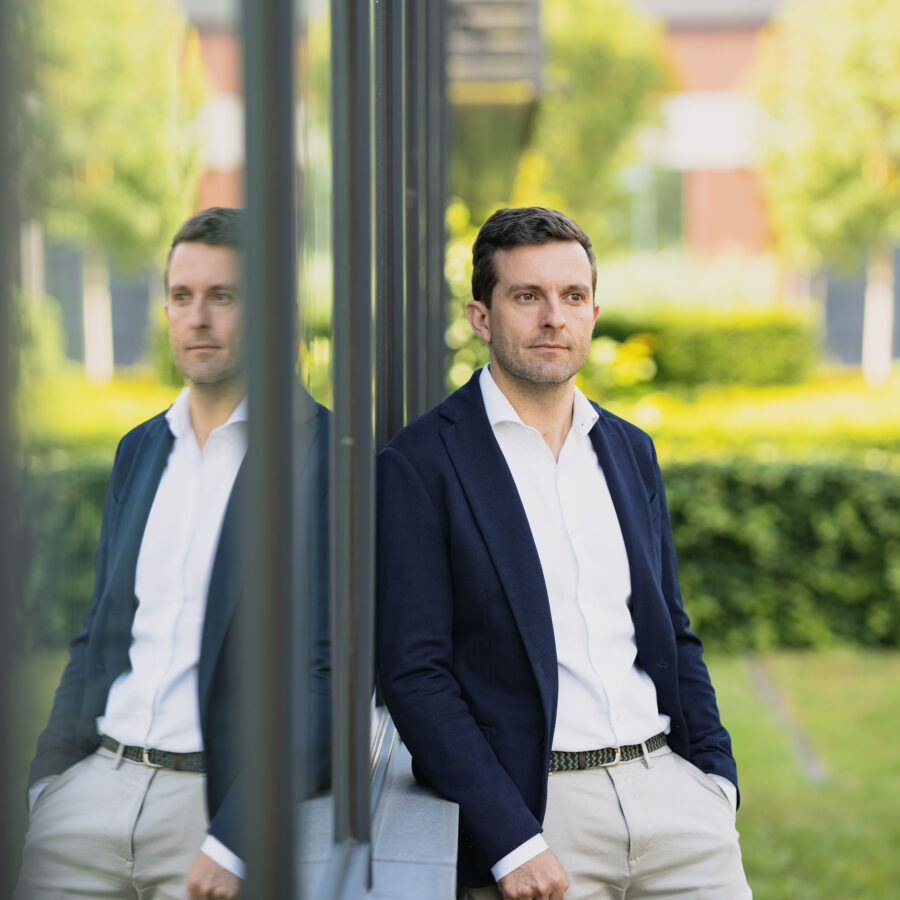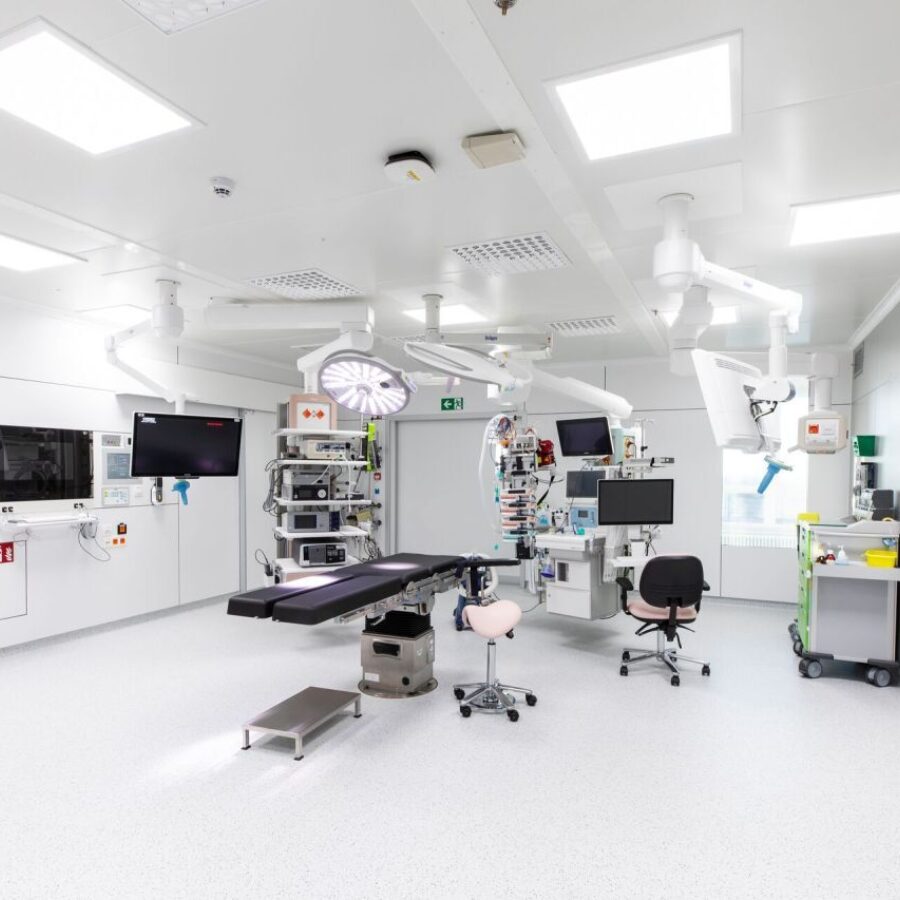
Moray Base floating wind foundation
"Lloyd's Register's Approval in Principle for the innovative Moray Base concept marks a significant milestone for the floating wind sector." These are the words of Markus Büsig, North Europe Area Manager of Lloyd's Register. Christiaan Schuiling, Senior Naval Architect at Maridea, which is developing the Moray Base together with MULTI.engineering, explains why the concept is ideal for mass production and why it's so important for the future of wind energy.
What's the idea behind the Moray Base?
There is currently a huge global demand for floating foundations for wind turbines. Because while the demand for sustainable energy is increasing rapidly, we have only a few shallow water locations worldwide where turbines with bottom-fixed foundations are possible. You have such areas in the North Sea, but they are filling up quickly. In Japan or California the seawater is too deep for fixed foundations. And in areas such as the China Sea or the coastal waters around South Korea, the seabed is much too soft to use a hammered monopile. That's why turbines on floating structures are going to boom in the next ten years. The bottom-fixed turbine market is becoming a replacement market.
Just how big is the offshore floating wind market exactly?
These are projects on an incredibly large scale. To give you an idea, 17 fields have been appointed in the ScotWind Leasing tender project alone, 11 of which are to be offered with floating turbines. Each field has between sixty and ninety turbines, with a price per unit of around fifty million euros. So, a huge amount of money is involved.
Over the past thirty years, 6,500 turbines have been installed at sea, with a total capacity of 56 GW. In the next twenty five years, it is expected that some 264 GW of floating turbines will be installed. That's five times as much capacity as in the past twenty five years. Counting with an average turbine size of 20 MW this results in over 12.500 units, which equals more than 1 unit per day to be installed.
The demand for offshore floating wind is huge. Are we prepared for that?
When power was first generated at sea, many builders probably expected that it would be possible to use the same techniques as for offshore oil and gas platforms. But that turned out not to be the case: offshore wind was given its own type of foundation that's very easy to produce in large numbers. The monopiles are simply very large piles that are driven into the ground and on which the wind turbine is then mounted.
What is the solution provided by Moray Base?
We've developed a floater that lends itself well to rapid and serial production. That's an absolute must. We do not only require a global production of more than 1 unit per day, we also need hundred turbines per farm installed in a single season, so you can't be building at a rate of four per year. You have to be able to produce much higher volumes, and also to transport them. The Moray Base concept is very similar to the production process for the monopiles. From a traditional offshore point of view, it may look a bit strange, but the design is very attractive because production is fast, in large volumes and almost fully automated, so labour costs play a lesser role.
Meanwhile, the design has already evolved, because there's now a Moray Base 1.0 and 2.0. What's the difference?
The first version has nicely curved elbows, the second version has straight corners with crossed tubes. That's the only difference and it's a purely commercial move because the market is showing interest in both models.
The first ideas for the Moray Base emerged in late 2019. What have been the biggest challenges in recent years?
The biggest challenge in creating the design was to question all the standard notions and experience from 'offshore assets & systems engineering. Because this 'thing' reacts completely differently than a boat.
And what have been the biggest milestones so far?
We achieved the first milestone two years ago, when we had developed the concept to the point that we could start talking to real parties on the market. Aside from that, the evaluation of our proposed transport and assembly process was also very important. There were a lot of concerns that it would be too expensive and too complex. But since one of the largest transport and assembly companies in the world came up with a serious proposal plus a cost price that was less of what we'd estimated, we also have a major commercial advantage in that area. Last years’ milestones include the Approval in Principle by Lloyd's Register and winning the Inspirational Blue Wave Award 2022.
Most recently we were awarded a concept and basic engineering study by the Chinese power engineering firm Yongfu. The contract was signed in presence of the Dutch Consul of Guanzhou and representatives of the governor of Fujian.

Let's go back to that transport and assembly process for a moment. How do you see that?
Our starting point is: no matter how good a design you have, if you don't get enough steel produced or don't find a transport company that gets all the parts to the site, then you're nowhere. To achieve the necessary volumes, every link in the supply chain has to be efficient. Every detail counts if you want to avoid situations where, for example, an installation intended for Scotland is built in Spain, but then has to be unloaded in the Maasvlakte because the Scottish port has insufficient depth for the submersible transport vessel. It ends up taking four tugs and three days to get it to the final destination for a single unit. That's anything but efficient, it drives up the cost and creates a bottleneck in the serial production process.
For the production, transport and assembly of the Moray Base, we can often use existing local facilities. The main components simply fit into open-top vessels or can be transported as deck cargo with general cargo ships. There is a huge global fleet of these ships available, so you don't have to rely on the only forty large, (submersible) deck carriers that are available worldwide for transport. As such we ease the transportation bottleneck. Assembly takes place afloat in a harbour, which means that you need less quay space and depth in the ports. Smaller ports with a draught of seven meters can also serve as a base for the construction of floating wind farms. A harbour basin that can host 6 floating Moray Bases is able to produce over 50 units per year. This is for example possible in a small port as Peterhead. That's a huge advantage now that demand is skyrocketing all over the world.
In order to properly anticipate possible bottlenecks in the supply chain, we map out every link, including the anchoring system. Because when the floating wind industry really booms, such large quantities of heavy anchor chains will be needed that it's highly questionable as to whether they can actually be supplied. So actually, we need a different anchoring system that doesn't require steel chains at all. That's what we're working on right now.
What are the next steps in the development of the Moray Base?
We're now in the process of bringing the Moray Base to the market. At the same time, we're also looking at what technical improvements are still possible and what the Moray 3.0 might look like.
How hard is it to convince that first customer?
It's not easy. There are at least a hundred concepts for floating foundations out there right now, all of which are trying to find an launching customer. And the number of candidates – the large energy companies – is limited. They have no easy way of comparing those concepts and of course, it would be easier if you already had a few installed at sea. But even a small prototype costs millions of euros. So that step to your first customer is difficult. But once you have that, you’re in business.



